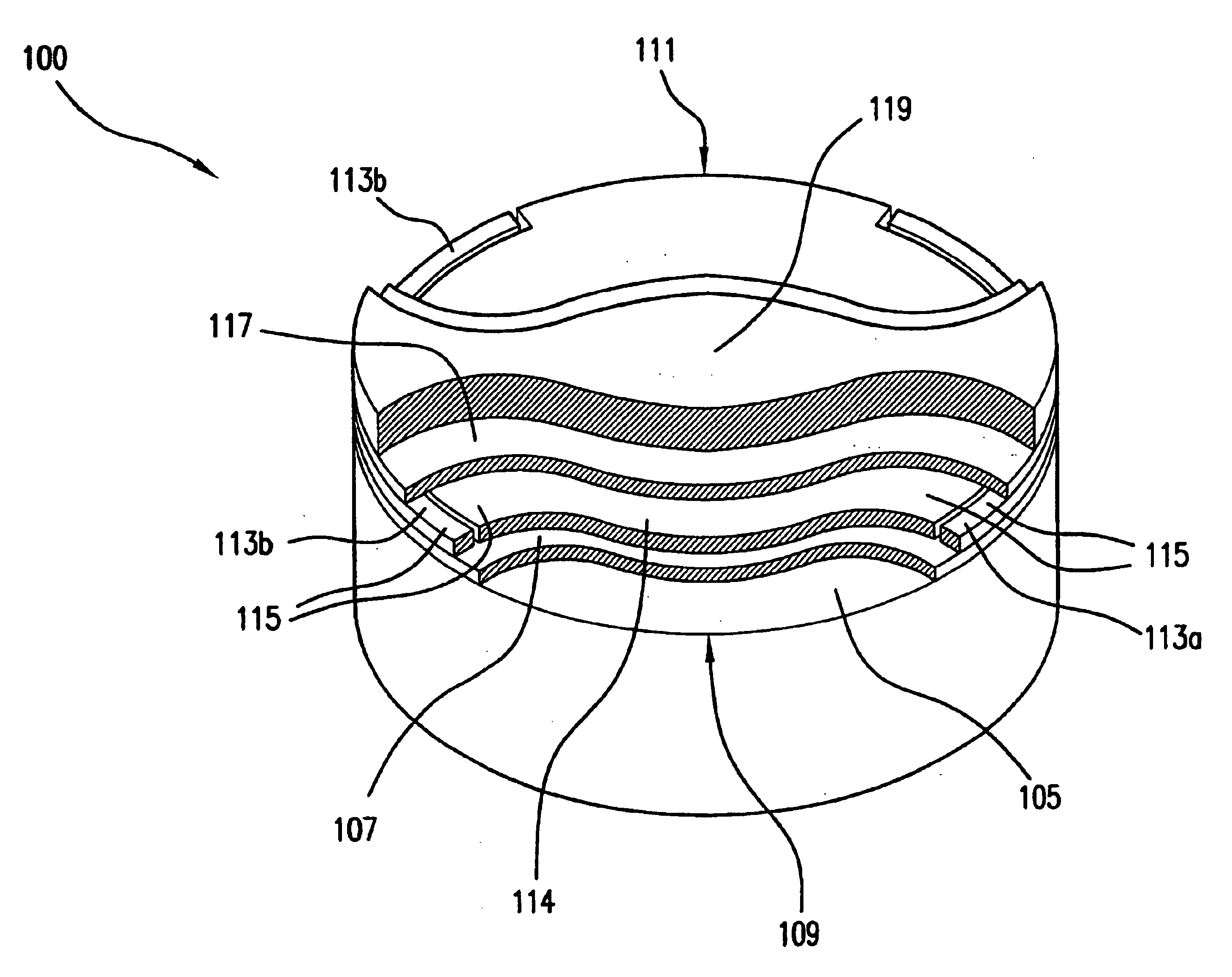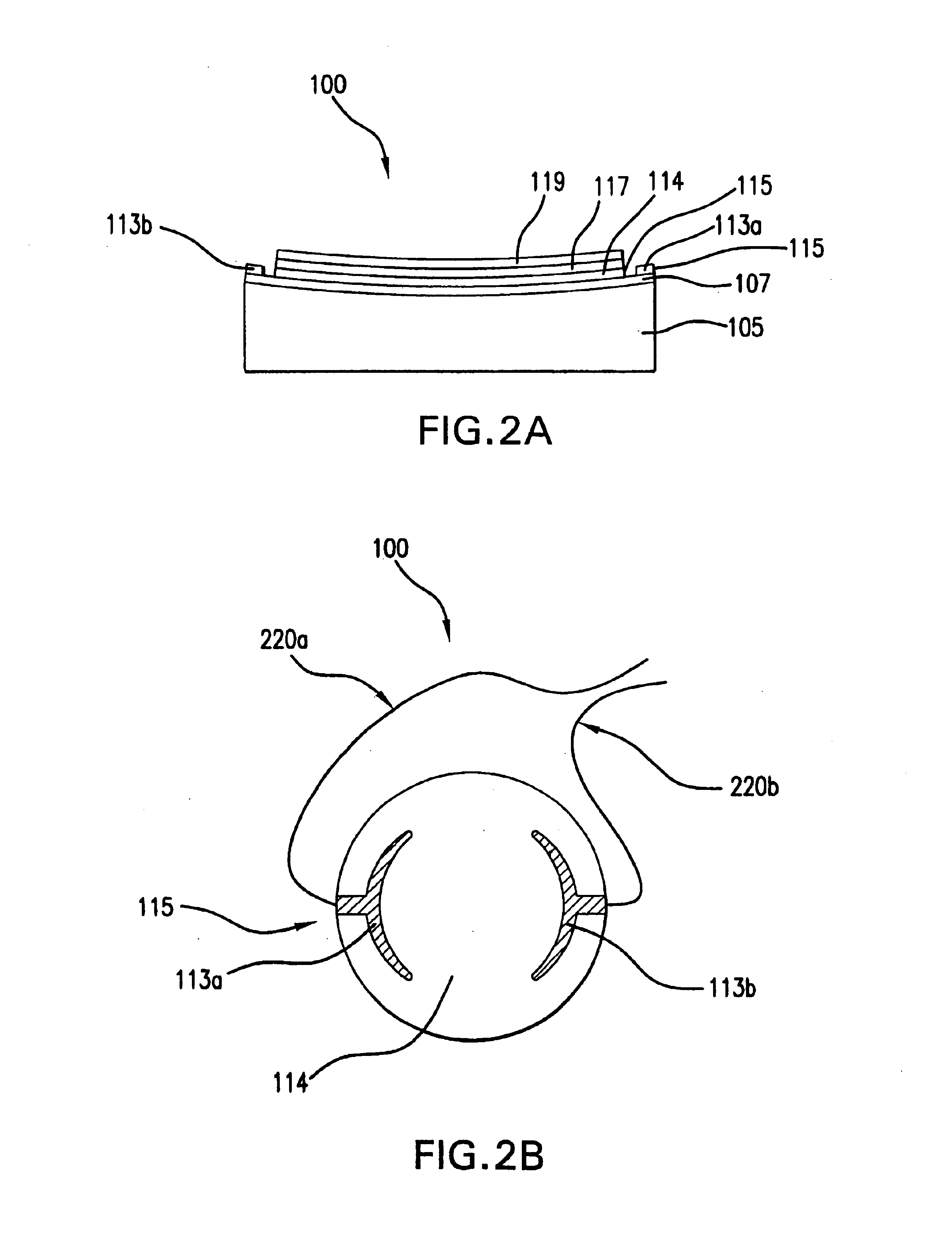Method and apparatus for managing actinic intensity transients in a lithography mirror
a technology of actinic intensity and lithography mirror, which is applied in the field of lithography systems, can solve the problems of shorter wavelength light becoming absorbed by glass lenses, heat load on mirrors, and light not reaching silicon wafers, so as to reduce or eliminate the variation of image distortion, reduce or eliminate the effect of cold edge
- Summary
- Abstract
- Description
- Claims
- Application Information
AI Technical Summary
Benefits of technology
Problems solved by technology
Method used
Image
Examples
Embodiment Construction
[0025]FIG. 1 illustrates a cross-sectional view of various layers and components of a lithography mirror 100 according to the present invention.
[0026]Lithography mirror 100 is composed of a mirror blank substrate 105, a resistive layer 107, a front edge 109, a rear edge 111, contacts 113 (e.g., electrodes) formed on resistive layer 107 for coupling a power supply (shown in FIG. 4) to resistive layer 107, a wiring layer 115, a polished layer 117, and a reflective layer 119.
[0027]Mirror blank substrate 105 is typically made of glass (e.g., low expansion glass, silicon, or quartz) and has a diameter-to-thickness ratio of approximately three to five. Mirror blank substrate 105 represents the basic structure of lithography mirror 100. The substrate should be machined and polished and have a near-zero Coefficient of Thermal Expansion (CTE), in accordance with standard industry practices. CTE is a thermodynamics term used to refer to the amount of increase in size of a solid object that oc...
PUM
| Property | Measurement | Unit |
|---|---|---|
| thickness | aaaaa | aaaaa |
| power | aaaaa | aaaaa |
| power | aaaaa | aaaaa |
Abstract
Description
Claims
Application Information
 Login to View More
Login to View More - R&D
- Intellectual Property
- Life Sciences
- Materials
- Tech Scout
- Unparalleled Data Quality
- Higher Quality Content
- 60% Fewer Hallucinations
Browse by: Latest US Patents, China's latest patents, Technical Efficacy Thesaurus, Application Domain, Technology Topic, Popular Technical Reports.
© 2025 PatSnap. All rights reserved.Legal|Privacy policy|Modern Slavery Act Transparency Statement|Sitemap|About US| Contact US: help@patsnap.com



